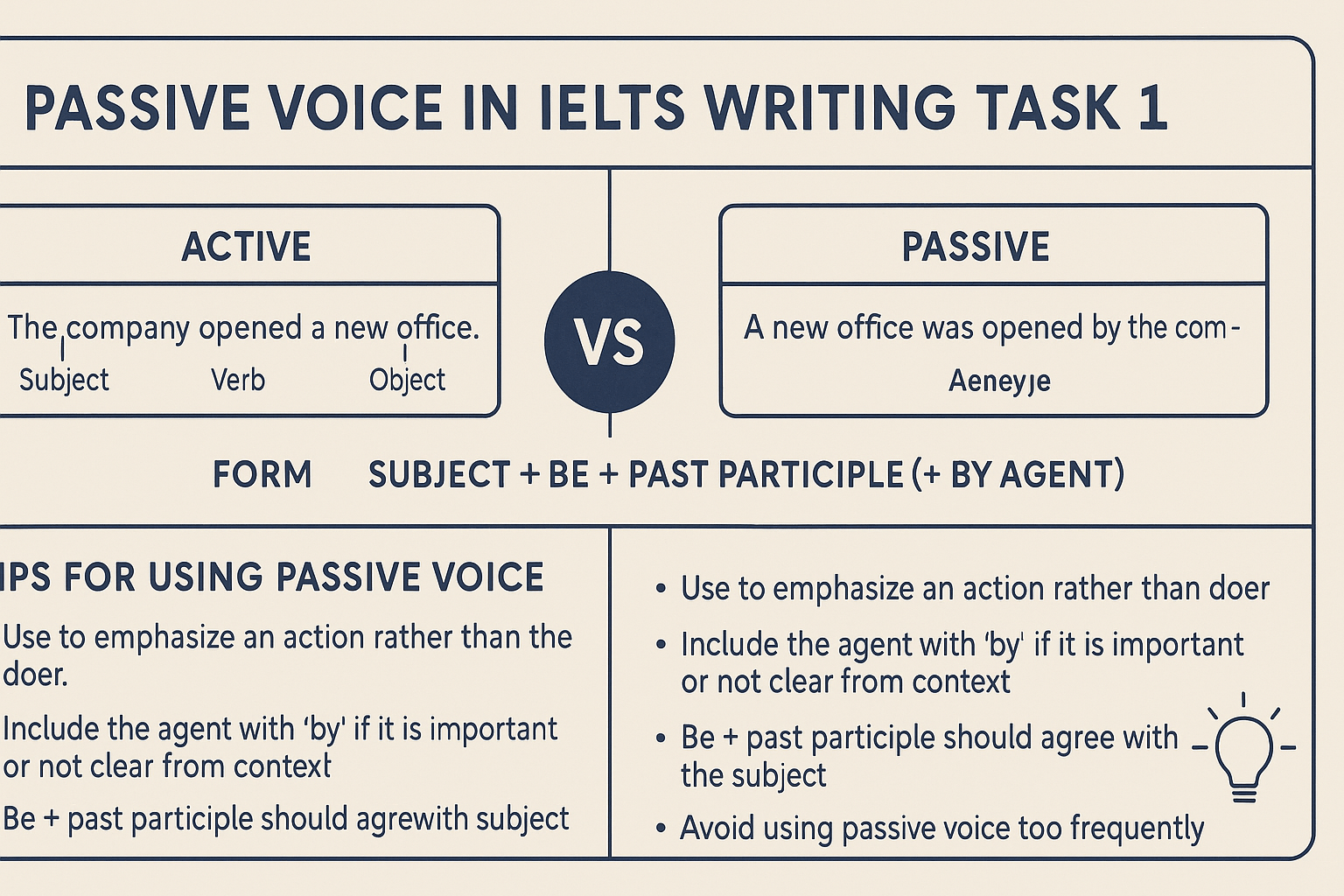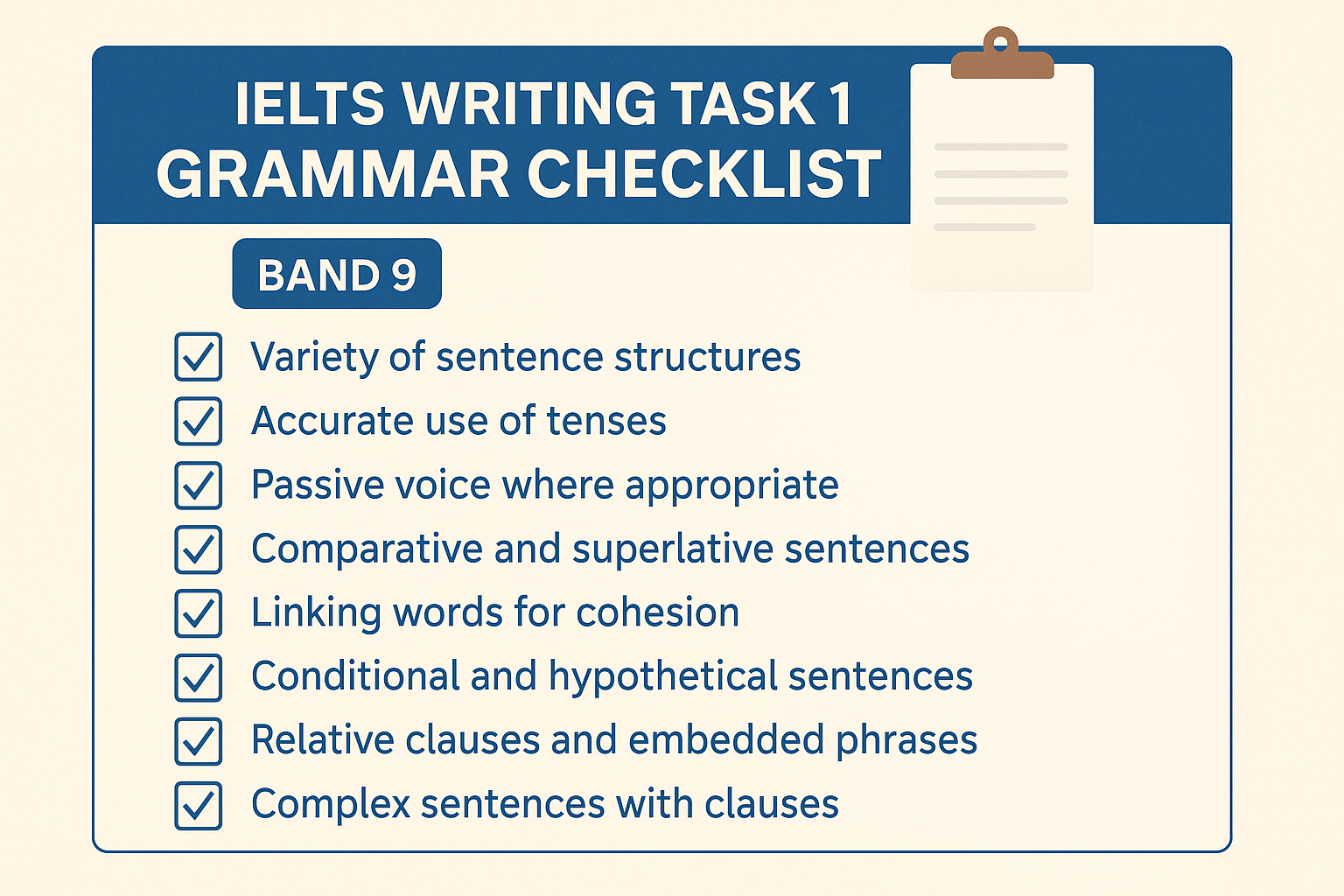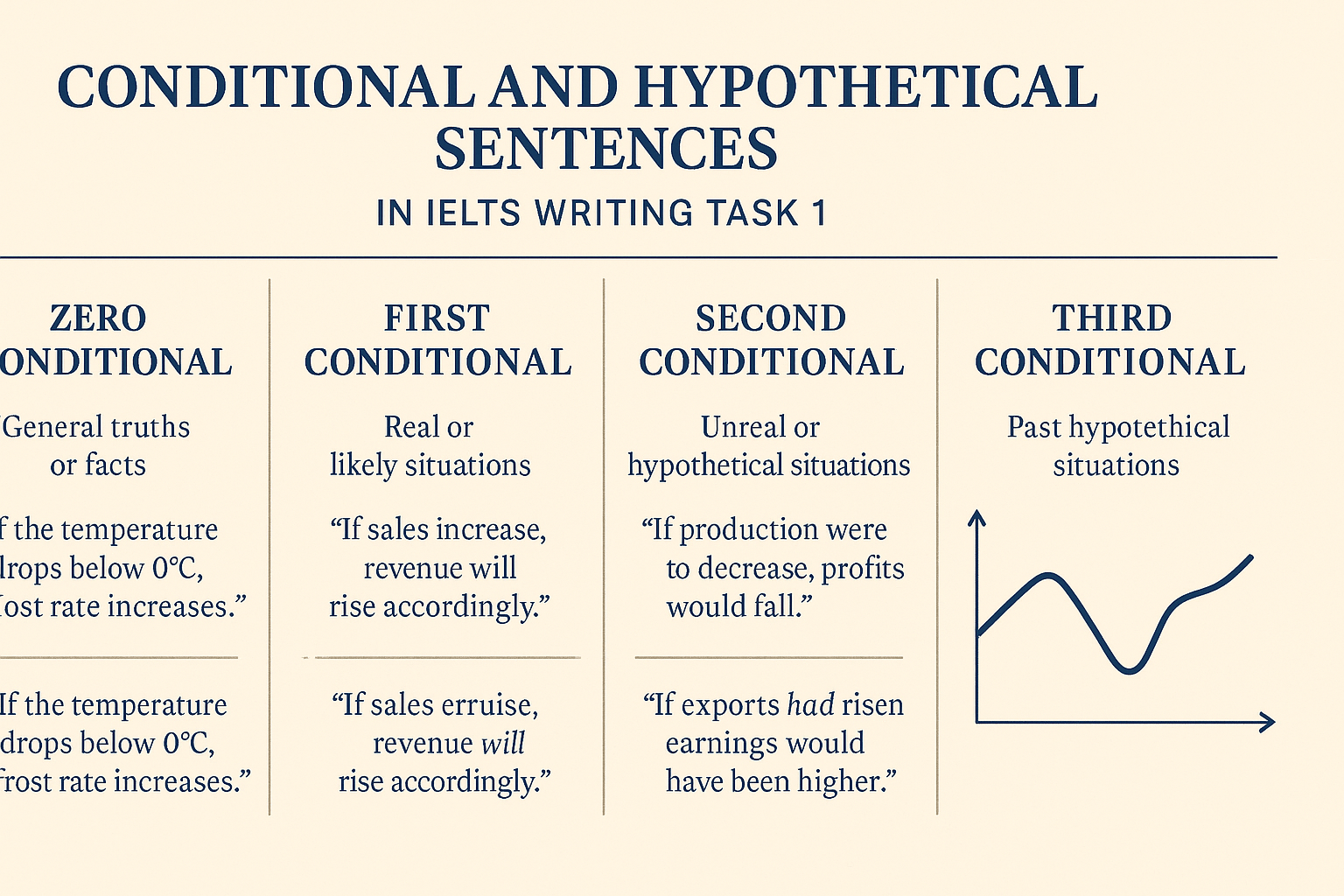- What Is Passive Voice?
- Why Use IELTS Passive Voice in Writing Task 1?
- When to Use Passive Voice in IELTS Writing Task 1
- Examples: Active vs. Passive Voice in IELTS Writing Task 1
- How to Form the Passive Voice Correctly
- Common Mistakes to Avoid with IELTS Passive Voice
- Tips for Practicing IELTS Passive Voice
- How IELTS Passive Voice Fits with Grammar and Vocabulary
- Sample Paragraph Using Passive Voice Correctly
- Final Thoughts
As an IELTS teacher, I often emphasize the importance of using the IELTS passive voice correctly in Writing Task 1. Passive constructions are not just a grammar point; they are an essential tool to make your writing clear, formal, and focused on the data — exactly what examiners want to see. In this post, I will explain why passive voice is often preferred in IELTS Writing Task 1 reports and how you can use it effectively to improve your score.
If you want to explore more grammar essentials, be sure to check out my IELTS Writing Task 1 Grammar for Band 7–9 guide. Also, boost your writing with appropriate vocabulary from my IELTS Writing Task 1 Vocabulary Complete Guide. For official resources, visit the IELTS official website, or look at the British Council and IDP IELTS websites.
What Is Passive Voice?
The passive voice is a sentence construction where the subject receives the action rather than performs it. The typical structure is:
Subject + to be (correct tense) + past participle (+ by agent)
For example:
- The data was collected over five years.
- The chart was created by the researchers.
Notice how the focus shifts from “who did the action” to “what was done.”
Why Use IELTS Passive Voice in Writing Task 1?
1. To Emphasize the Data or Process
In IELTS Writing Task 1, the focus is on the information presented in the graph, chart, or diagram — not on who is doing the action. Using passive voice lets you highlight the data rather than the agent.
Example:
- The number of cars sold was recorded annually.
Instead of: - Researchers recorded the number of cars sold annually.
2. To Create a Formal and Objective Tone
Academic and formal writing favors passive constructions because they sound more objective and less personal. This tone is exactly what IELTS examiners expect.
3. To Describe Processes Without Naming Agents
When describing a process diagram, the passive voice helps explain each stage without needing to specify who performs the action.
Example:
- Water is heated before it passes through the pipes.
When to Use Passive Voice in IELTS Writing Task 1
You should use passive voice in these situations:
- Describing data or trends where the doer is unknown or irrelevant:
The data was gathered from various sources. - Explaining steps in a process:
The mixture is stirred until it thickens. - Highlighting the action or result, not the agent:
Electricity consumption has increased steadily.
Examples: Active vs. Passive Voice in IELTS Writing Task 1
| Active Voice | Passive Voice | Which to Use? |
|---|---|---|
| Researchers collected the data over 10 years. | The data was collected over 10 years. | Passive (focus on data) |
| The company manufactures the products. | The products are manufactured by the company. | Passive (formal tone) |
| The government increased taxes last year. | Taxes were increased last year. | Passive (focus on action, not doer) |
How to Form the Passive Voice Correctly
Forming the passive voice requires using the correct form of the verb “to be” plus the past participle of the main verb. Here’s a quick guide for tenses commonly used in Writing Task 1:
| Tense | Passive Form Example |
|---|---|
| Present Simple | The chart is updated monthly. |
| Past Simple | The data was collected in 2015. |
| Present Perfect | The figures have been revised recently. |
| Future Simple | The report will be published next year. |
Common Mistakes to Avoid with IELTS Passive Voice
- Using passive unnecessarily — Don’t overuse passive voice as it can make your writing feel awkward or unclear. Mix it with active sentences for balance.
- Incorrect tense with “to be” — Always match the tense of “to be” with the time frame of the action.
- Missing past participle — Remember the main verb must be in the past participle form in passive sentences.
- Using “by” phrase too often — Usually, the agent is not needed in Writing Task 1.
Tips for Practicing IELTS Passive Voice
- Practice rewriting active sentences into passive form from sample answers or textbooks.
- Use passive voice to describe process diagrams and data collection methods.
- Check your work carefully for tense consistency and correct verb forms.
- Read official model answers from the British Council to see natural use of passive voice.
How IELTS Passive Voice Fits with Grammar and Vocabulary
To achieve Band 7 or higher, your use of passive voice should be grammatically accurate and combined with a good range of vocabulary and sentence structures. For example, linking passive voice with varied sentence types and academic vocabulary shows language sophistication.
If you want to deepen your grammar skills, visit my detailed guide on IELTS Writing Task 1 Grammar for Band 7–9 and improve your lexical resource with my Vocabulary Complete Guide.
Sample Paragraph Using Passive Voice Correctly
The data was collected from five different cities over ten years. During this period, the number of visitors was recorded annually. The process is repeated each year to ensure accuracy. The results have been analyzed by experts to identify trends.
Final Thoughts
Mastering IELTS passive voice in Writing Task 1 is a great way to improve the formality, clarity, and focus of your reports. Remember to use it when highlighting data, describing processes, or when the agent is unknown or irrelevant. Balance passive voice with active sentences for natural writing, and always check your tenses and verb forms.
If you want to explore more grammar and vocabulary tips, visit my detailed guides linked above. For additional practice, check official IELTS materials from the IELTS official site, the British Council, and IDP IELTS.
Good luck with your IELTS preparation!





One Response
helloI really like your writing so a lot share we keep up a correspondence extra approximately your post on AOL I need an expert in this house to unravel my problem May be that is you Taking a look ahead to see you